Hanoi, the capital city of Vietnam, is a vibrant metropolis that beautifully blends the old with the new. The city promises an unforgettable experience, offering everything from ancient temples and unique architecture to bustling markets and serene lakes. This article will guide you through the best sights in Hanoi, ensuring you get all of the city’s iconic landmarks.
19 best sights in Hanoi to visit
These are the 19 best attractions in Hanoi that travelers must visit to understand more about the capital and the nation’s fascinating history and culture.
Temple of Literature
The Temple of Literature, known locally as Văn Miếu, is one of Hanoi’s most significant cultural and historical sites. Founded in 1070 by Emperor Ly Thanh Tong, this temple is dedicated to Confucius and honors Vietnam’s finest scholars and literary figures. It also served as the country’s first university, the Imperial Academy, making it a symbol of Vietnam’s rich educational heritage.
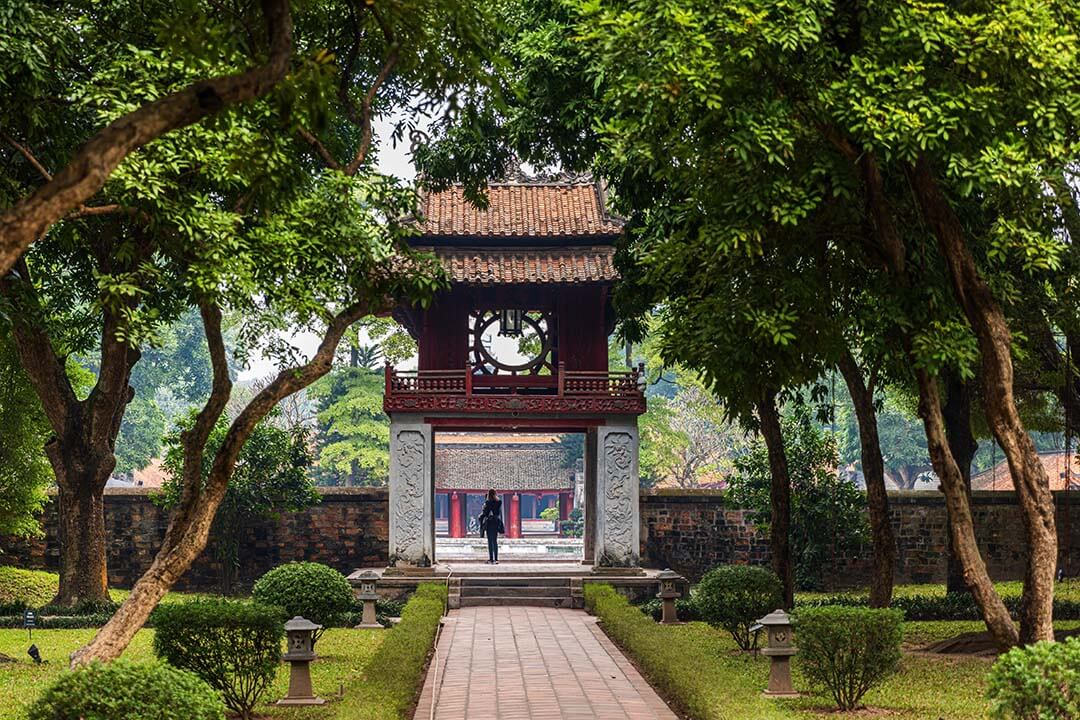
Visitors to the Temple of Literature can stroll through its five courtyards, each representing different aspects of scholarly life. The manicured gardens, tranquil ponds, and ancient stone steles inscribed with the names of successful candidates from royal examinations provide a serene environment for reflection and appreciation of Vietnam’s intellectual history. As you wander through this historical sanctuary, you’ll gain insight into the nation’s reverence for knowledge and education.
Ho Chi Minh’s Mausoleum
Constructed between 1973 and 1975, Ho Chi Minh’s Mausoleum is a significant site in Vietnamese history. Located in Ba Dinh Square, where President Ho Chi Minh declared Vietnam’s independence in 1945, the mausoleum is the final resting place of the beloved leader. Surrounding the mausoleum is a large complex that includes the Presidential Palace, Ho Chi Minh’s stilt house, and the Ho Chi Minh Museum.
Discover more about this attraction at Ho Chi Minh Mausoleum is the best sight for your trip in Hanoi
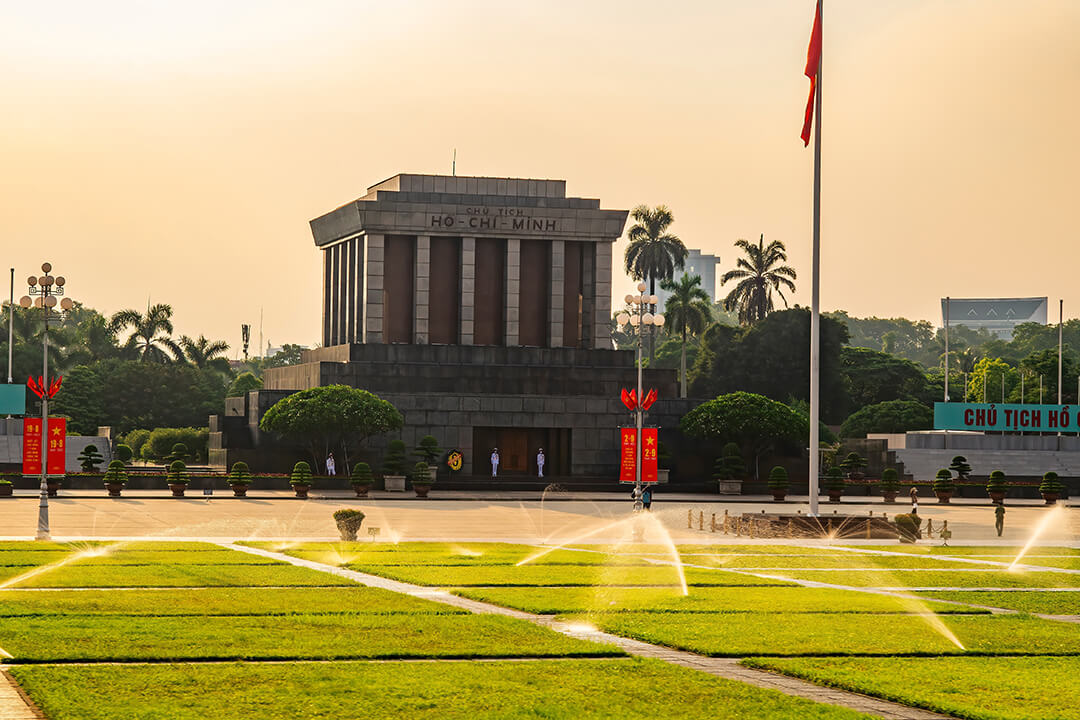
Travelers can visit Ho Chi Minh’s Mausoleum from Tuesday to Thursday and on weekends (Saturday and Sunday), with visiting hours typically from 7:30 AM to 10:30 AM during the warmer months (April to October) and from 8:00 AM to 11:00 AM during the cooler months (November to March). The mausoleum is closed on Mondays and Fridays, as well as for a few months each year for maintenance. During holidays, the mausoleum will remain open and operate from 7:30 AM to 10:30 AM each day.
Dong Xuan Market
Dong Xuan Market, established in 1889, is the largest indoor market in Hanoi and a bustling hub of commercial activity. Located in the heart of the Old Quarter, this market offers a vibrant mix of goods ranging from fresh produce and local delicacies to clothing, accessories, and electronics. The market’s bustling atmosphere provides a sight into the daily lives of Hanoi’s residents and the city’s dynamic commerce.
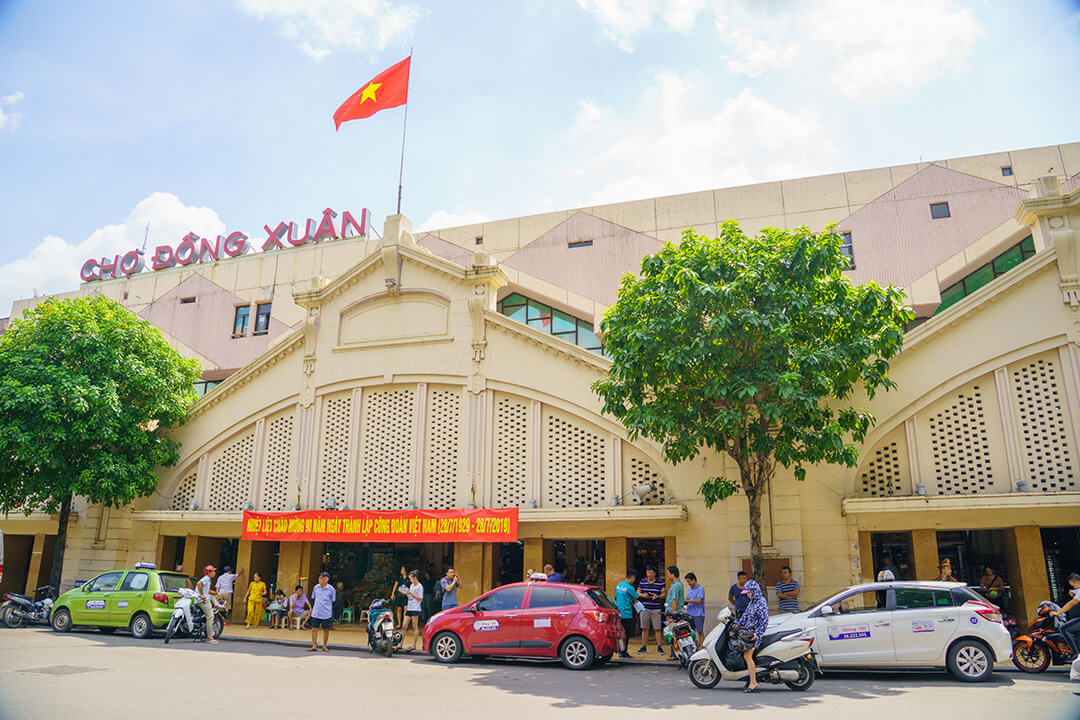
As you cross through the crowded aisles of Dong Xuan Market, you’ll encounter a sensory overload of sights, sounds, and smells. For those interested in experiencing authentic local life and shopping for unique souvenirs, Dong Xuan Market is a must-visit destination. Remember to apply bargaining skills as part of your shopping experience.
Hanoi Old Quarter
The Hanoi Old Quarter, or Phố Cổ, is the historical and cultural heart of the city, characterized by its narrow, winding streets and well-preserved architecture. This area has been the commercial center of Hanoi for centuries, with each street historically dedicated to a specific type of trade or craft, such as silk, silver, or herbal medicine.
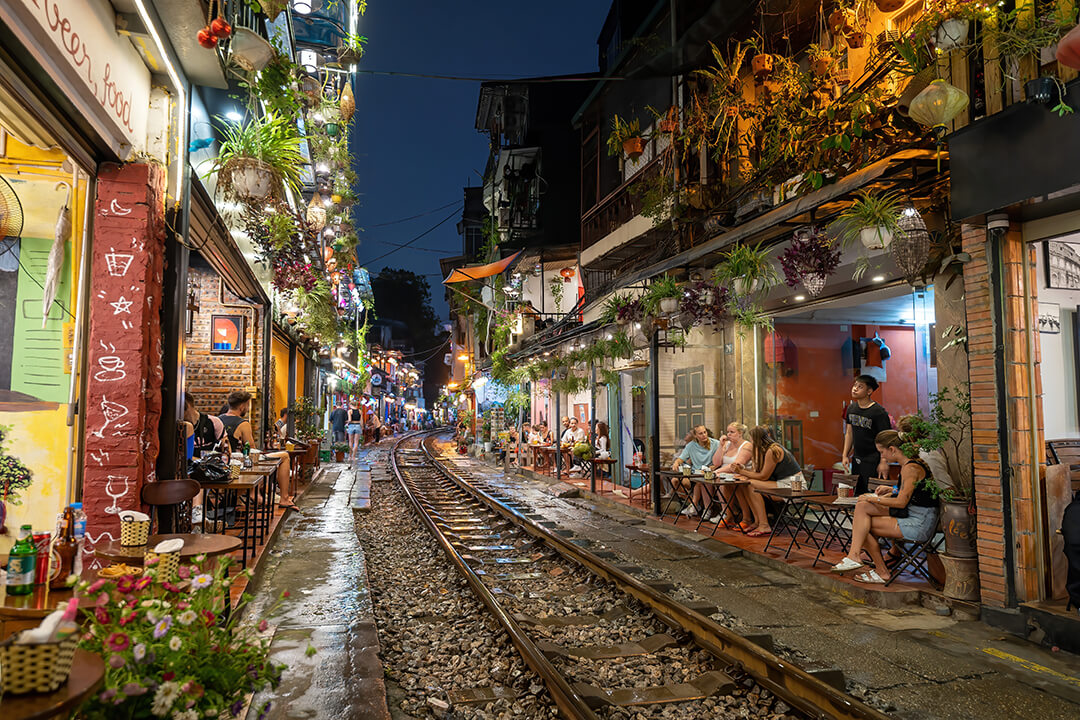
Strolling through the Old Quarter, visitors can explore numerous temples, pagodas, and ancient houses that reflect the area’s rich heritage. The Old Quarter is also a food lover’s paradise, offering an array of street food stalls and traditional restaurants where you can sample Hanoi’s culinary delights, from pho and bun cha to egg coffee. The lively atmosphere and vibrant street scenes make the Old Quarter one of the best sights in Hanoi.
If you are a foodie, read more about best food in Vietnam
Tran Quoc Pagoda
Tran Quoc Pagoda, located on a small island in West Lake, is the oldest Buddhist temple in Hanoi, dating back to the 6th century during the reign of Emperor Ly Nam De. The pagoda’s serene setting and picturesque surroundings make it a peaceful retreat from the city’s hustle and bustle.
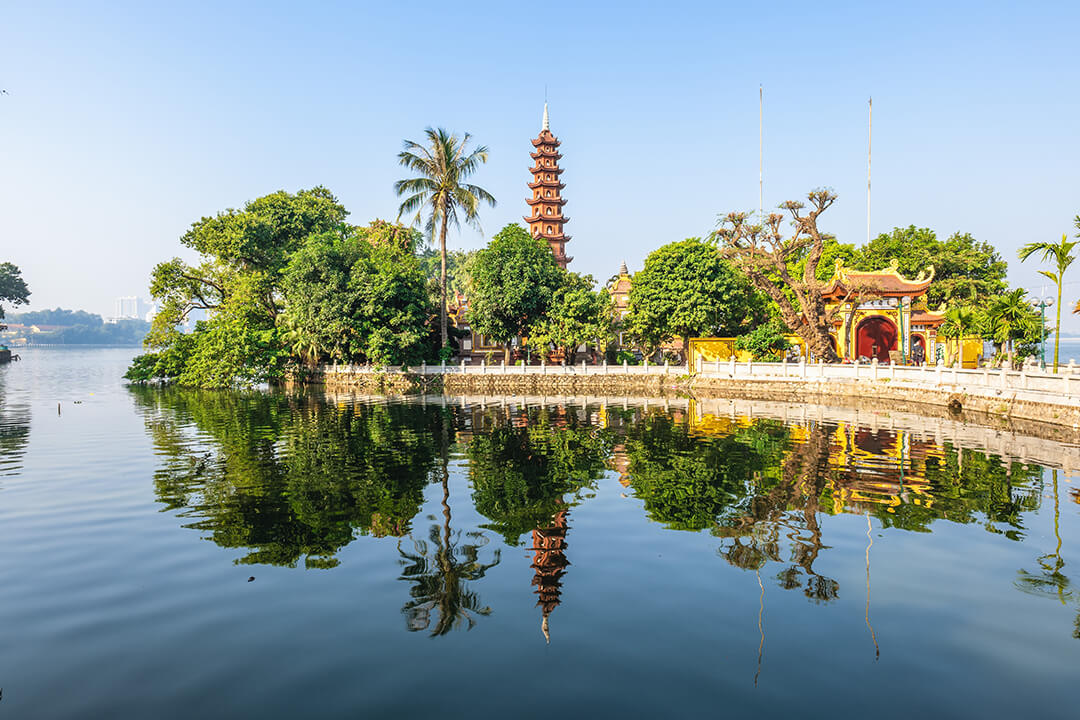
The temple complex includes a tall, slender pagoda tower, several ancient stupas, and a beautiful Bodhi tree, which is said to have been grown from a cutting of the original tree under which Buddha attained enlightenment. Visitors to Tran Quoc Pagoda can admire the intricate architecture and detailed carvings that adorn the structures, offering a view into Vietnam’s deep-rooted Buddhist traditions and artistic heritage. It’s a perfect spot for contemplation and photography.
Hanoi Opera House
The Hanoi Opera House, built in 1911 during the French colonial period, is an architectural gem and a symbol of the city’s cultural sophistication. Modeled after the Palais Garnier in Paris, the Opera House showcases neoclassical French design with ornate details, grand staircases, and a magnificent facade.
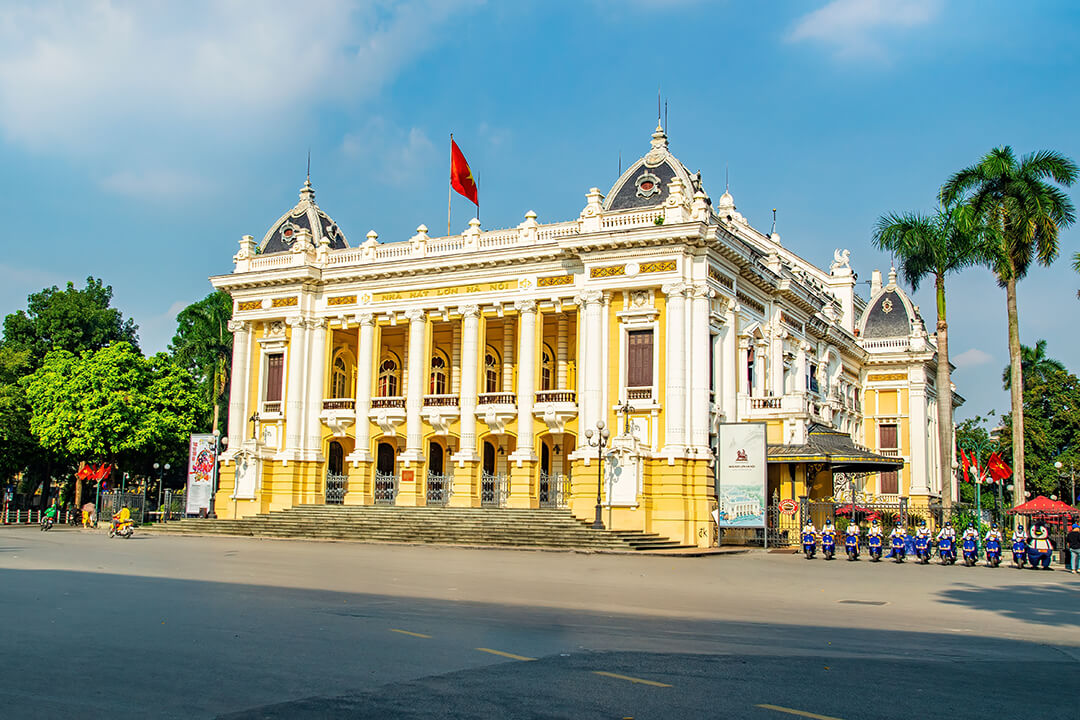
The interior of the Hanoi Opera House is equally impressive, featuring lavish chandeliers, plush red seats, and exquisite decor. It serves as best sights in Hanoi for high-profile cultural events, including classical music concerts, ballets, and theatrical performances. Attending a show at the Hanoi Opera House offers a unique opportunity to experience the city’s artistic scene and enjoy a night of refined entertainment in an elegant setting.
Hoa Lo Prison Relic
Hoa Lo Prison, notoriously known as Maison Centrale, is a historical museum that offers a sobering glimpse into the country’s tumultuous past. Originally built by the French colonial government in the late 19th century to house Vietnamese political prisoners, the prison later held American POWs during the war.
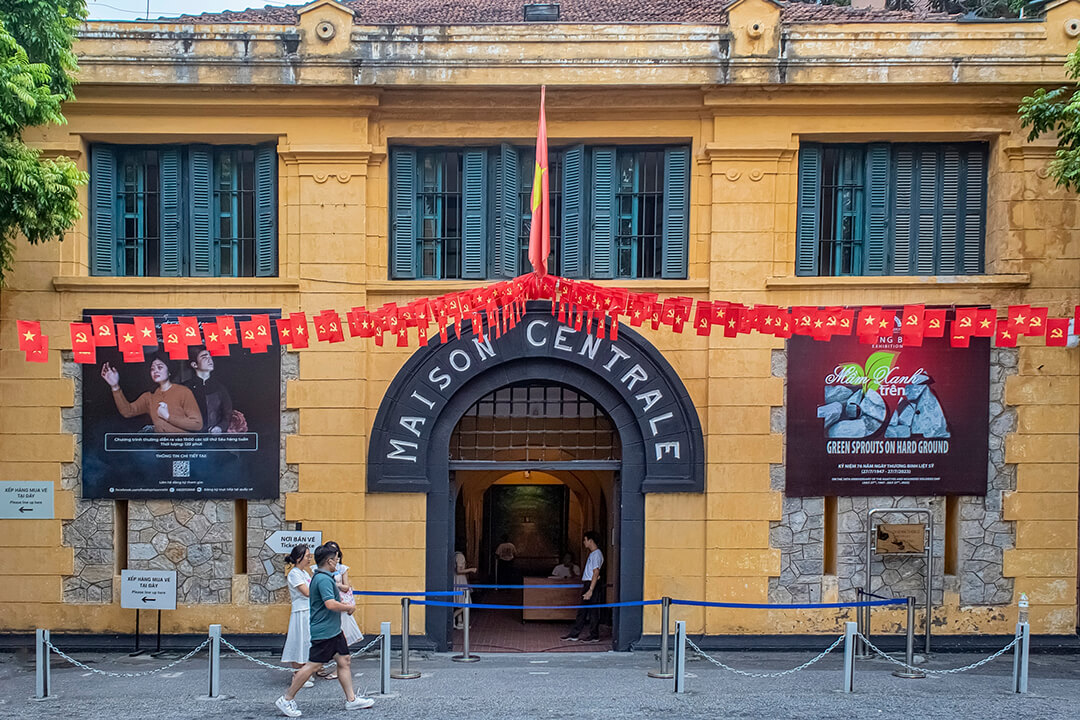
The exhibits at Hoa Lo Prison include artifacts, photographs, and recreated prison cells that illustrate the harsh conditions endured by inmates and the resilience of the Vietnamese people. It is open daily from 8:00 AM to 5:00 PM, including holidays and New Year. Admission tickets are priced at 30,000 VND per person.
St. Joseph’s Cathedral
St. Joseph’s Cathedral, also known as Big Church in Hanoi, is a stunning example of neo-Gothic architecture in the heart of Hanoi. Constructed in the late 19th century by the French colonial administration, the cathedral is one of the oldest and most significant churches in Vietnam.
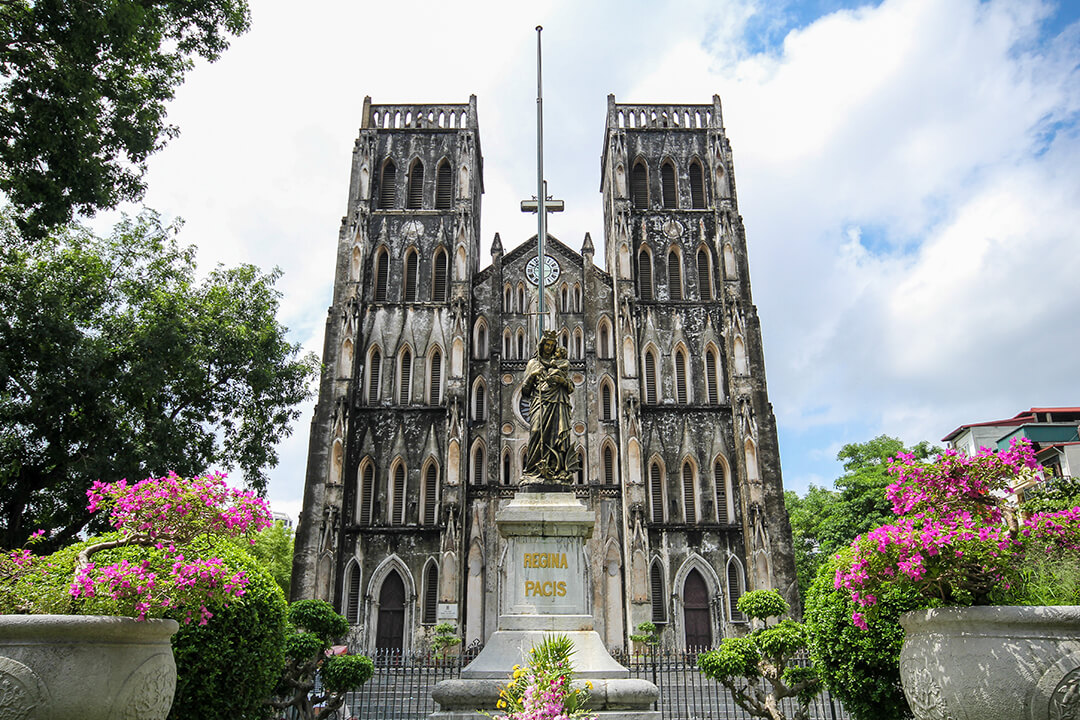
The facade has two towers over 31 m high with a system of 5 ancient bells more than 100 years old on top. St. Joseph’s Cathedral remains an active place of worship and a central landmark in the city’s religious life. Its location in the bustling Old Quarter makes it a convenient and captivating stop for visitors exploring Hanoi’s rich architectural and cultural heritage.
Ta Hien Street
Ta Hien Street, often referred to as “Beer Street,” is a lively and bustling thoroughfare in the heart of Hanoi’s Old Quarter. This narrow street comes alive in the evenings as locals and tourists gather to enjoy the vibrant nightlife, street food, and, of course, the famous Bia Hoi (fresh beer).
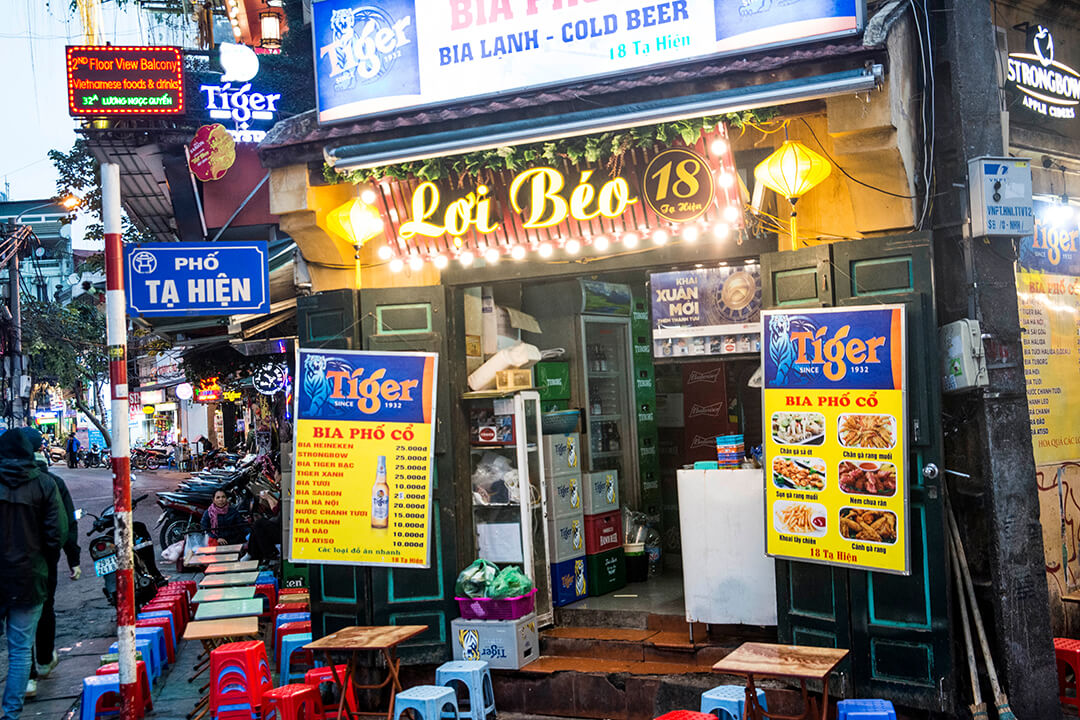
The atmosphere on Ta Hien Street is electric, with sidewalk eateries serving a variety of Vietnamese dishes, from grilled meats to savory pancakes. The street’s numerous bars and cafes offer a range of drinks and a chance to socialize with fellow travelers and Hanoi residents. Whether you’re looking for a night of fun or a casual place to relax and people-watch, Ta Hien Street is among the best attractions in Hanoi to experience the city’s nightlife.
Thang Long Water Puppet Theatre
The Thang Long Water Puppet Theatre offers a unique cultural experience that is quintessentially Vietnamese. Water puppetry, an ancient art form that dates back to the 11th century, involves wooden puppets performing on water, accompanied by traditional music and storytelling.
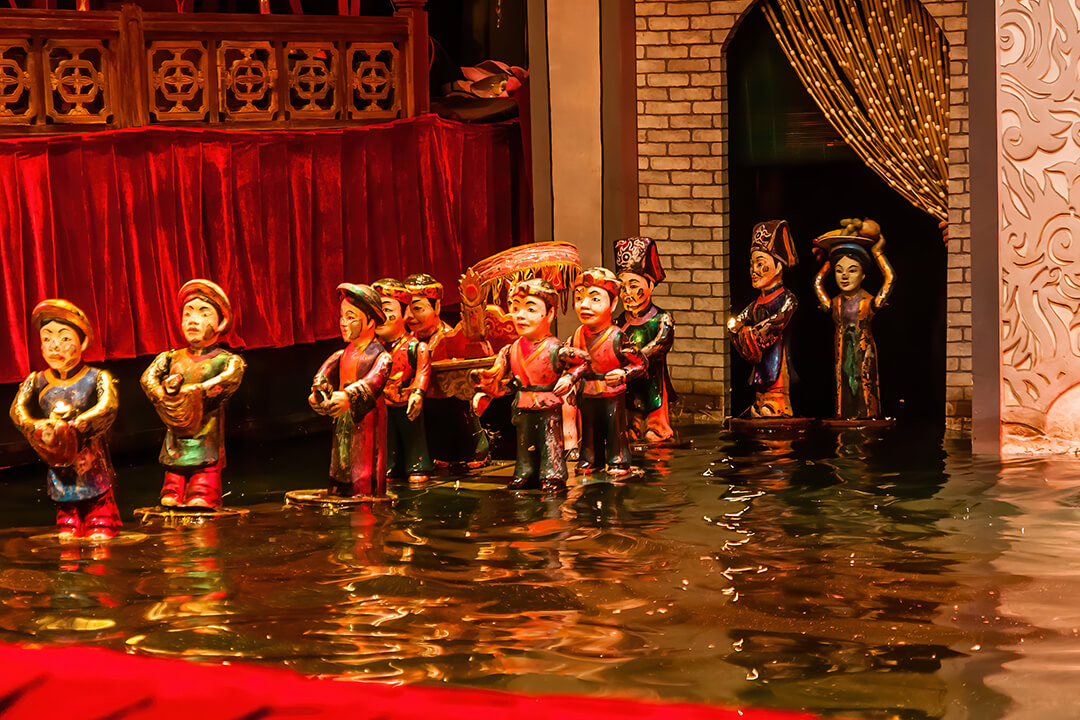
The performances at Thang Long Theatre bring to life Vietnamese folklore, legends, and rural scenes, with colorful puppets and skilled puppeteers maneuvering the puppets from behind a screen. The theatre’s intimate setting allows the audience to fully appreciate the intricate artistry and cultural significance of this traditional performance. A visit to the Thang Long Water Puppet Theatre is a must for anyone seeking to understand and appreciate Vietnam’s rich cultural heritage.
Vietnam National Fine Arts Museum
The Vietnam National Fine Arts Museum, located near the Temple of Literature, is a treasure trove of Vietnamese art spanning from ancient times to the contemporary era. The museum’s extensive collection includes sculptures, paintings, ceramics, and folk art, providing a comprehensive overview of the nation’s artistic heritage.
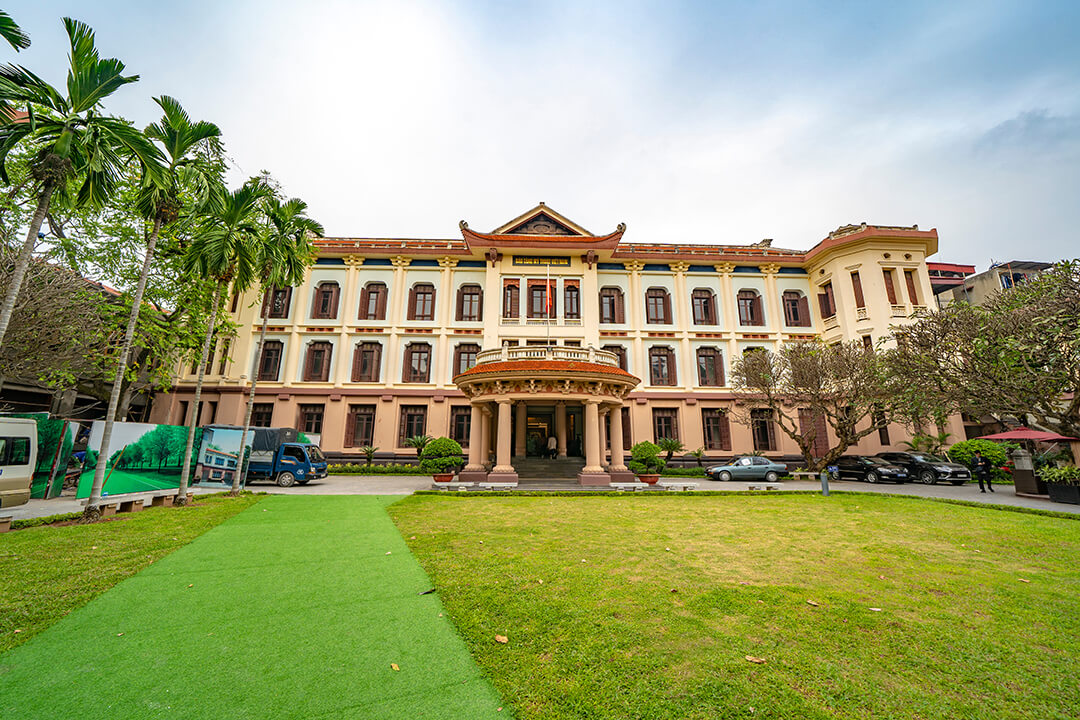
Exhibits at the museum are well-curated, with sections dedicated to different periods and styles, such as prehistoric art, classical sculpture, and modern paintings. Highlights include traditional lacquerware, intricate silk paintings, and impressive wooden statues. The museum also features temporary exhibitions that showcase the works of contemporary Vietnamese artists.
Vietnam Museum of Ethnology
The Vietnam Museum of Ethnology is a fascinating institution dedicated to the diverse ethnic groups that make up Vietnam’s population. Located in the Cau Giay District, this museum provides an in-depth look at the cultural traditions, lifestyles, and artifacts of the 54 recognized ethnic groups in Vietnam.
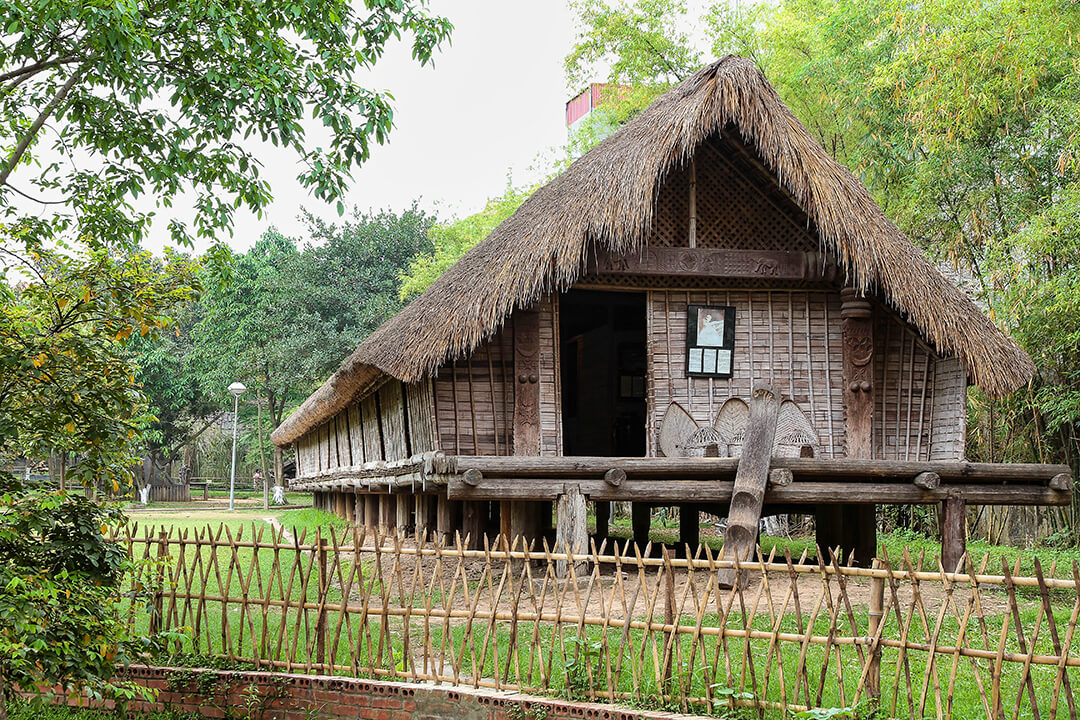
The museum’s exhibits are divided into indoor and outdoor sections. Inside, you’ll find displays of traditional clothing, tools, musical instruments, and everyday objects, accompanied by detailed explanations of their significance. The outdoor area features life-sized replicas of traditional houses from various ethnic groups, allowing visitors to explore and understand their architectural styles and living conditions. This place ranks as the best sights in Hanoi for anyone interested in the rich cultural tapestry of Vietnam.
Ngoc Son Temple
Ngoc Son Temple, or the Temple of the Jade Mountain, is a picturesque temple located on a small island in Hoan Kiem Lake. Connected to the shore by the iconic red The Huc Bridge, this temple is dedicated to the 13th-century military leader Tran Hung Dao, who is revered for his role in defending Vietnam against Mongol invasions.
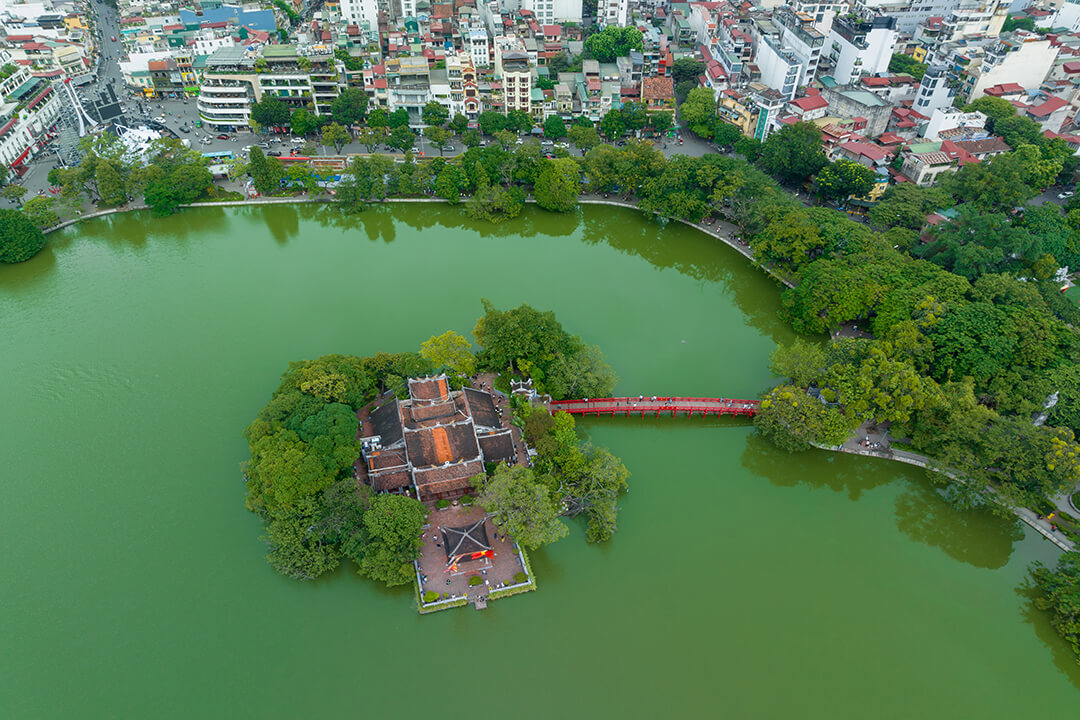
The temple complex includes several pavilions, altars, and statues, all set amidst lush greenery and tranquil waters. Visitors to Ngoc Son Temple can enjoy the serene atmosphere and stunning views of Hoan Kiem Lake, making it a perfect spot for relaxation.
Vietnamese Women’s Museum
Another place on the list of best attractions in Hanoi is the Vietnamese Women’s Museum. Located near Hoan Kiem Lake, it is a unique institution dedicated to the contributions and achievements of women in Vietnam’s history and society. The museum’s exhibits highlight the roles of women in various aspects of life, including family, work, and wartime activities.
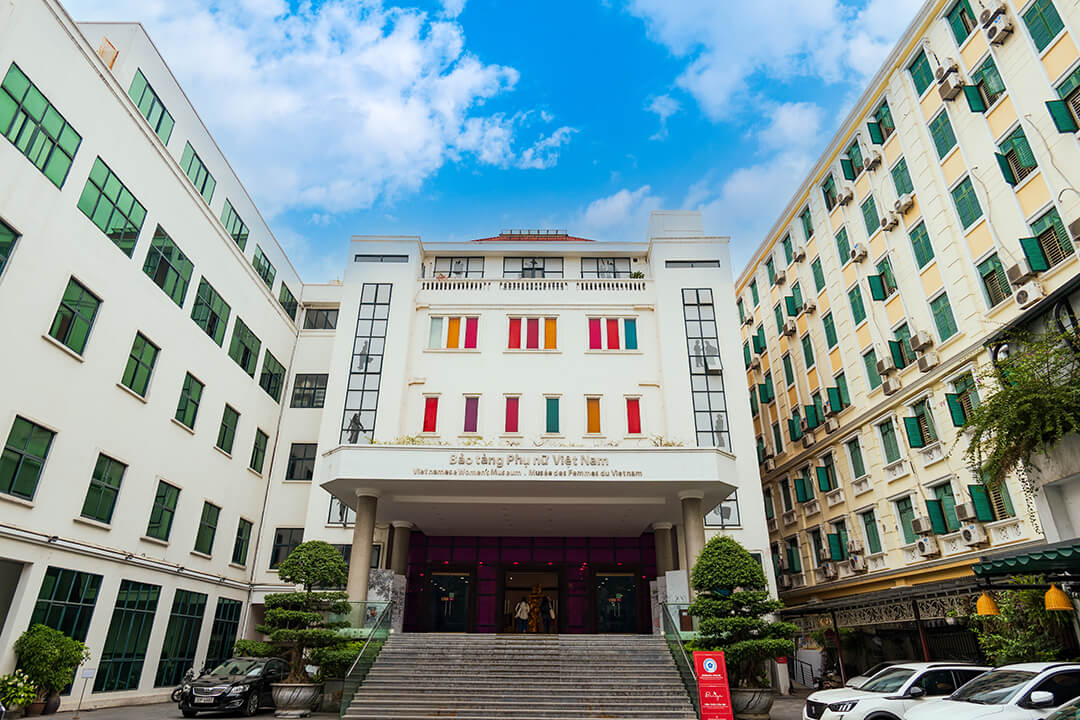
The museum’s collection includes traditional clothing, artifacts, photographs, and personal stories that illustrate the diverse experiences of Vietnamese women. Special exhibits focus on topics such as women’s participation in the war, their roles in rural and urban communities, and their contributions to the arts and culture.
One Pillar Pagoda
The One Pillar Pagoda, or Chua Mot Cot, is an iconic Buddhist temple in Hanoi, renowned for its unique architectural design. Built-in 1049 by Emperor Ly Thai Tong, the pagoda is constructed on a single stone pillar, symbolizing a lotus blossom rising from the water.
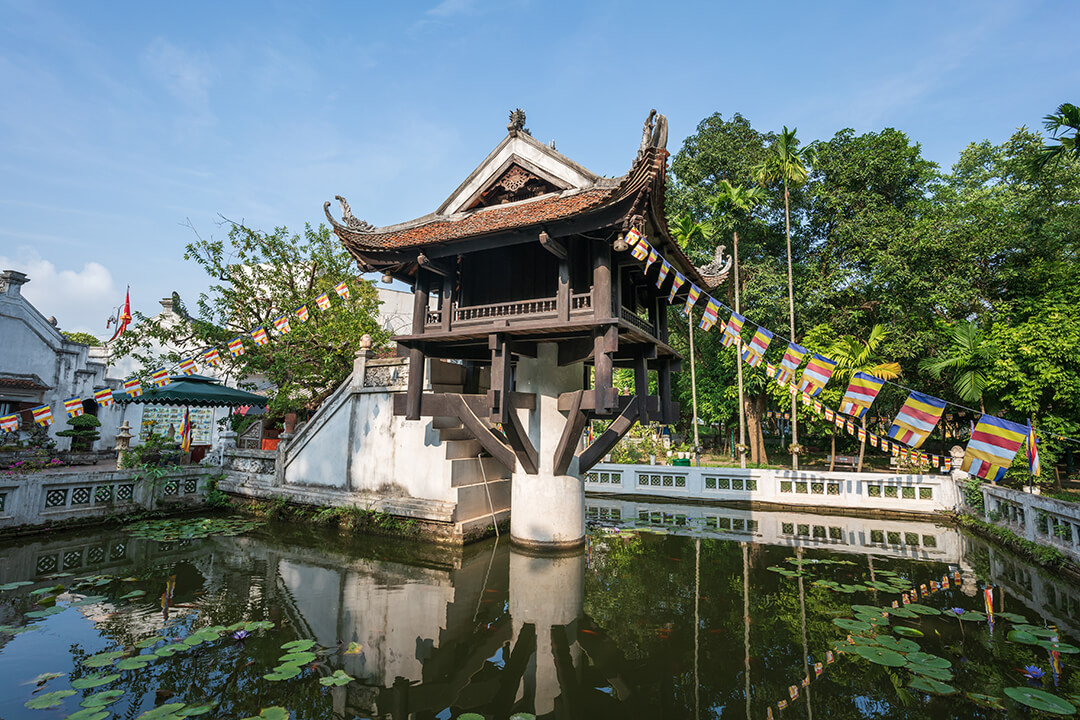
The temple’s design was inspired by a dream of King Ly Thai Tong, in which a Bodhisattva seated on a lotus flower took him by the hand and led him onto the lotus. The One Pillar Pagoda is a popular site for both tourists and pilgrims, who come to admire its distinctive architecture and seek blessings for fertility and health.
Quan Thanh Temple
Quan Thanh Temple, located near West Lake, is one of Hanoi’s oldest and most important Taoist temples. Dedicated to Tran Vu, the deity of the North, the temple was originally built during the reign of Emperor Ly Thai To in the 11th century.
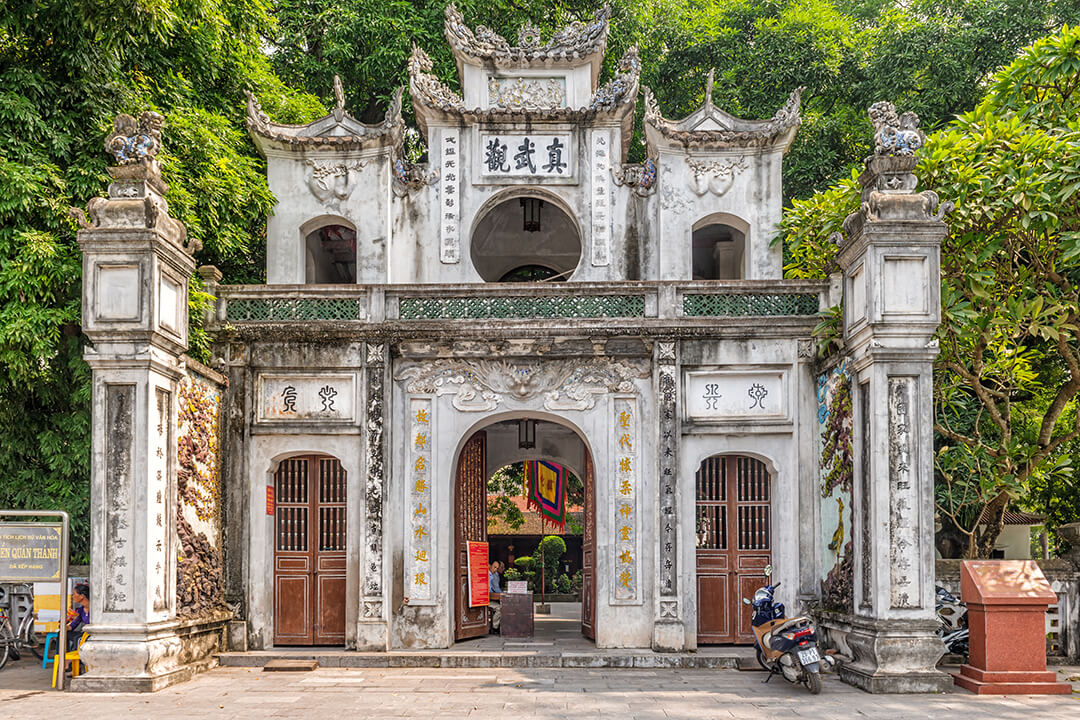
The temple’s architecture features traditional Vietnamese design elements, including intricate wood carvings, stone statues, and ornate altars. The highlight of Quan Thanh Temple is the large bronze statue of Tran Vu, which stands at the center of the main hall. Visitors to the temple can explore its peaceful courtyards, admire the craftsmanship of the ancient structures, and gain insight into the spiritual traditions of Taoism in Vietnam.
Imperial Citadel of Thang Long
The Imperial Citadel of Thang Long, recognized as a UNESCO World Heritage Site, stands as a testament to Hanoi’s historical and cultural importance. Originally built in the 11th century during the Ly Dynasty, the citadel served as the political and military center of Vietnam for over a thousand years.
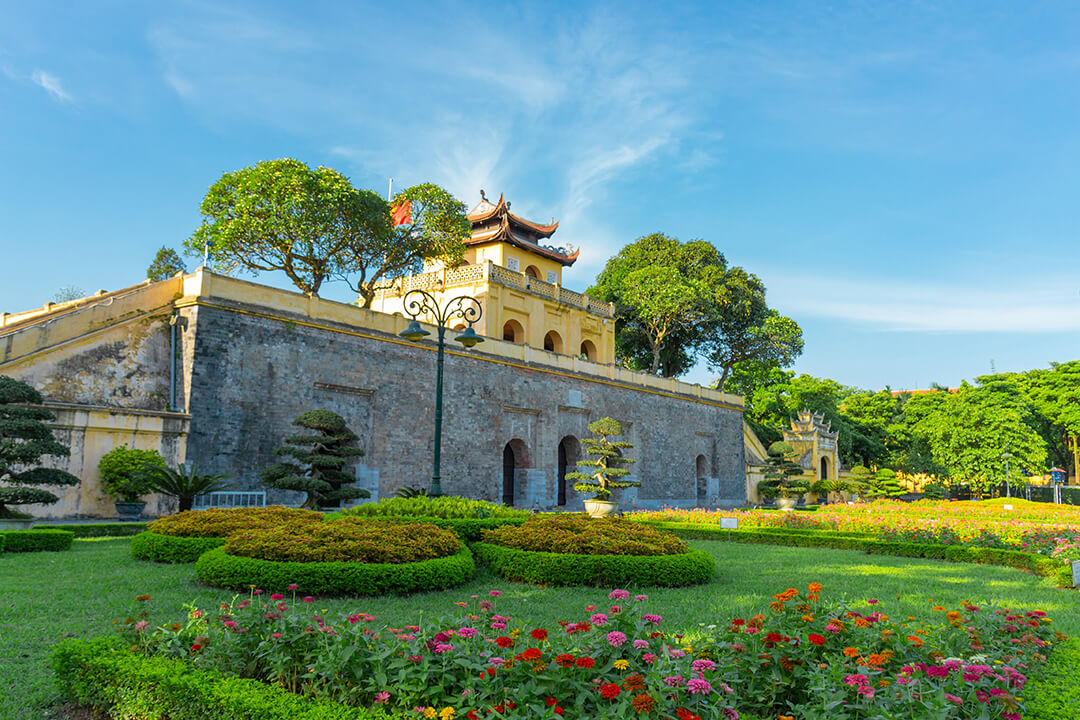
The sprawling complex includes ancient palaces, gates, and relics that reflect the architectural and cultural evolution of Vietnam through various dynasties. Key highlights include the Flag Tower, the Doan Mon Gate, and the archaeological site at 18 Hoang Dieu, where visitors can see remnants of the ancient citadel.
Hoan Kiem Lake
Hoan Kiem Lake, or “Lake of the Returned Sword,” is a scenic and historical landmark in the heart of Hanoi. The lake is named after a legend in which Emperor Le Loi returned a magical sword to the Golden Turtle God after defeating the Ming invaders in the 15th century.
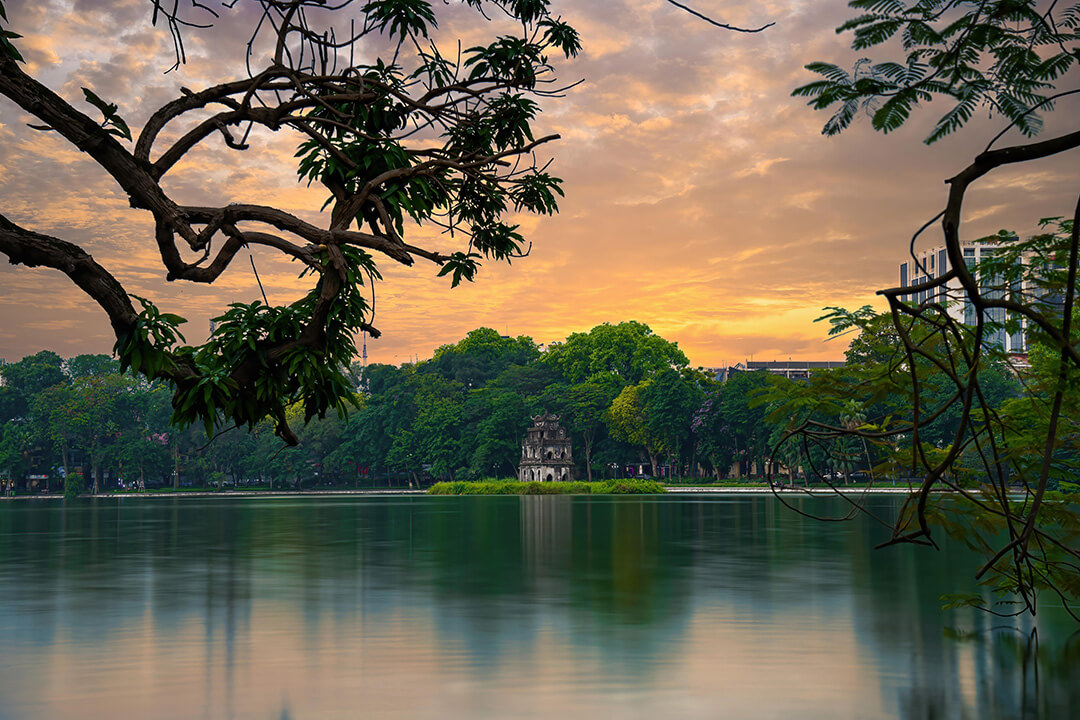
The lake’s picturesque setting, with its tranquil waters, lush greenery, and the iconic Turtle Tower, makes it a popular spot for both locals and tourists. The surrounding area includes walking paths, benches, and beautiful gardens, providing a peaceful retreat from the bustling city. Visitors can also explore Ngoc Son Temple, located on an island in the lake, and enjoy the vibrant atmosphere of Hanoi’s Old Quarter nearby. Hoan Kiem Lake is considered on the list of best attractions in Hanoi for relaxation, photography, and experiencing the local culture.
Bat Trang Pottery Village
Bat Trang Pottery Village, located about 13 kilometers southeast of Hanoi, is renowned for its centuries-old tradition of pottery making. The village has been producing high-quality ceramics since the 14th century, and its products are highly prized both domestically and internationally.
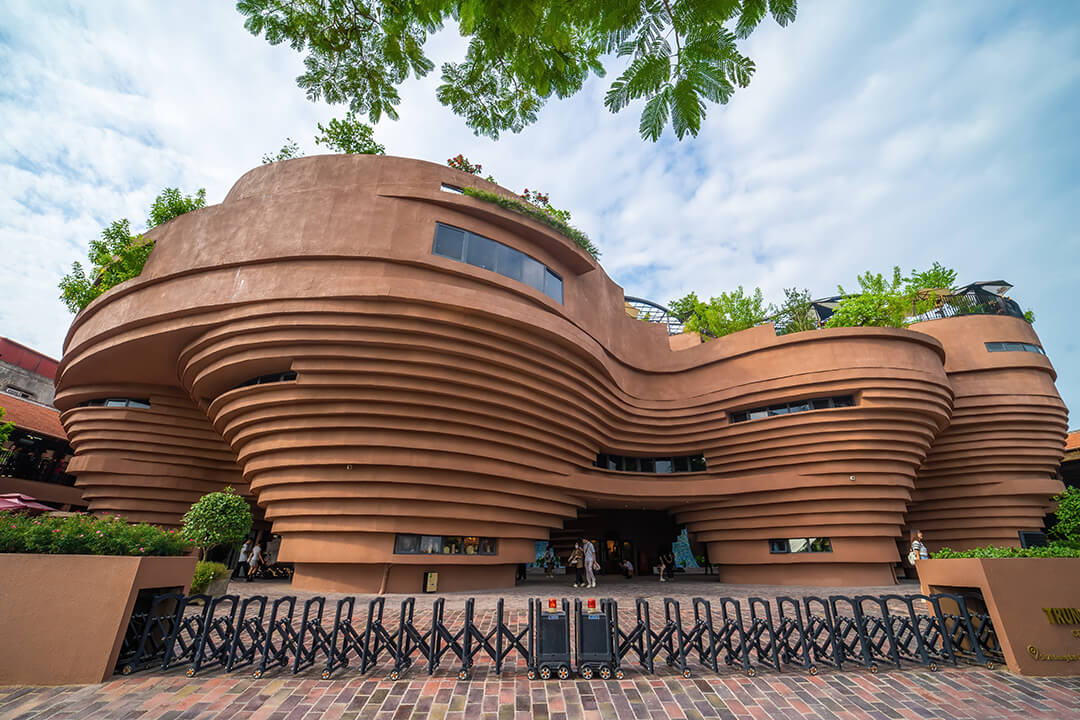
Visitors to Bat Trang Pottery Village can explore workshops and studios where skilled artisans create beautiful pottery pieces using traditional techniques. You can also try your hand at making your pottery under the guidance of a local craftsman. The village offers a unique opportunity to learn about the history and art of Vietnamese ceramics and to purchase exquisite handmade souvenirs.
The best time to travel to Hanoi
The finest time to travel to Hanoi is during the autumn months of September to November and the spring months of March to April. During these periods, the weather is generally pleasant, with mild temperatures and less humidity, making it ideal for exploring the city’s outdoor attractions.
Autumn in Hanoi is particularly enchanting, with cool breezes and the scent of blooming flowers filling the air. Spring brings a burst of vibrant colors as flowers bloom throughout the city, creating picturesque scenes. These seasons also coincide with various cultural festivals and events, offering travelers a chance to experience the rich traditions and lively atmosphere of Hanoi.
As you explore these 19 best sights in Hanoi, you’ll uncover the rich history, vibrant culture, and unique charm that make this city so captivating. The thousand-year-old city is sure to leave you with lasting memories. For more information and travel tips about Vietnam, make sure to follow Vietnam Travel Tips.


